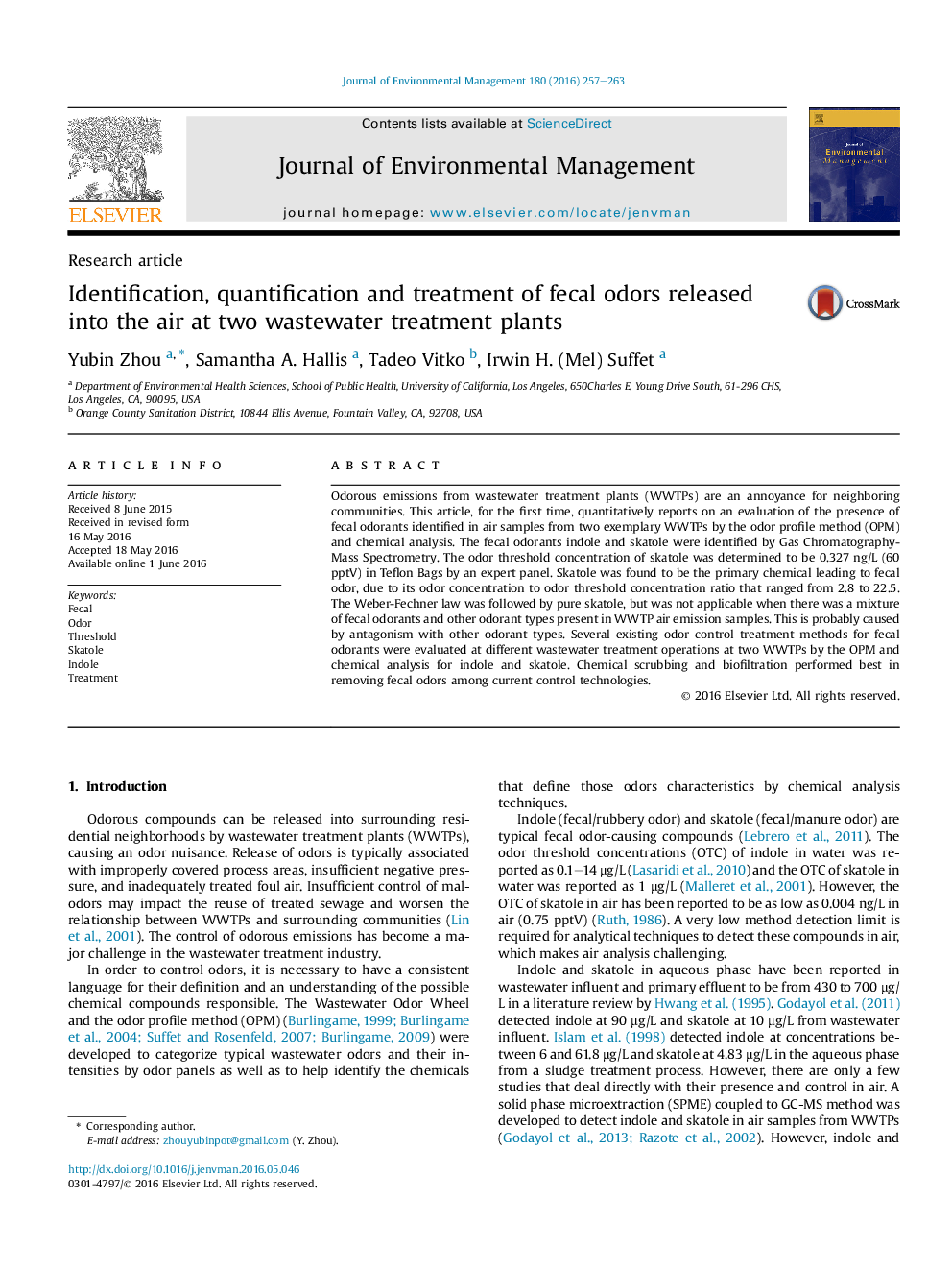| Article ID | Journal | Published Year | Pages | File Type |
|---|---|---|---|---|
| 7480084 | Journal of Environmental Management | 2016 | 7 Pages |
Abstract
Odorous emissions from wastewater treatment plants (WWTPs) are an annoyance for neighboring communities. This article, for the first time, quantitatively reports on an evaluation of the presence of fecal odorants identified in air samples from two exemplary WWTPs by the odor profile method (OPM) and chemical analysis. The fecal odorants indole and skatole were identified by Gas Chromatography-Mass Spectrometry. The odor threshold concentration of skatole was determined to be 0.327Â ng/L (60 pptV) in Teflon Bags by an expert panel. Skatole was found to be the primary chemical leading to fecal odor, due to its odor concentration to odor threshold concentration ratio that ranged from 2.8 to 22.5. The Weber-Fechner law was followed by pure skatole, but was not applicable when there was a mixture of fecal odorants and other odorant types present in WWTP air emission samples. This is probably caused by antagonism with other odorant types. Several existing odor control treatment methods for fecal odorants were evaluated at different wastewater treatment operations at two WWTPs by the OPM and chemical analysis for indole and skatole. Chemical scrubbing and biofiltration performed best in removing fecal odors among current control technologies.
Related Topics
Physical Sciences and Engineering
Energy
Renewable Energy, Sustainability and the Environment
Authors
Yubin Zhou, Samantha A. Hallis, Tadeo Vitko, Irwin H. (Mel) Suffet,
